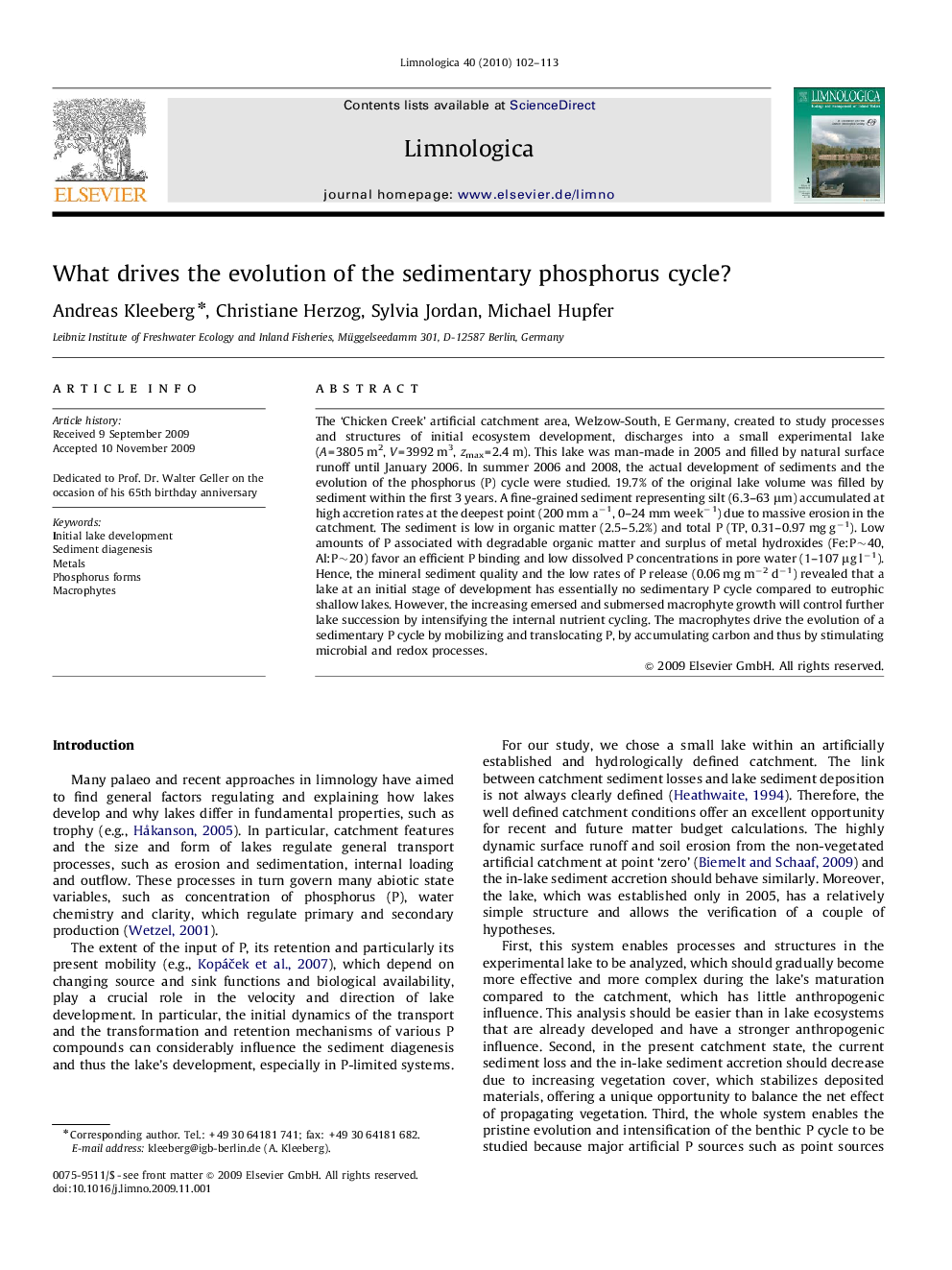| کد مقاله | کد نشریه | سال انتشار | مقاله انگلیسی | نسخه تمام متن |
|---|---|---|---|---|
| 4400587 | 1306979 | 2010 | 12 صفحه PDF | دانلود رایگان |

The ‘Chicken Creek’ artificial catchment area, Welzow-South, E Germany, created to study processes and structures of initial ecosystem development, discharges into a small experimental lake (A=3805 m2, V=3992 m3, zmax=2.4 m). This lake was man-made in 2005 and filled by natural surface runoff until January 2006. In summer 2006 and 2008, the actual development of sediments and the evolution of the phosphorus (P) cycle were studied. 19.7% of the original lake volume was filled by sediment within the first 3 years. A fine-grained sediment representing silt (6.3–63 μm) accumulated at high accretion rates at the deepest point (200 mm a−1, 0–24 mm week−1) due to massive erosion in the catchment. The sediment is low in organic matter (2.5–5.2%) and total P (TP, 0.31–0.97 mg g−1). Low amounts of P associated with degradable organic matter and surplus of metal hydroxides (Fe:P∼40, Al:P∼20) favor an efficient P binding and low dissolved P concentrations in pore water (1–107 μg l−1). Hence, the mineral sediment quality and the low rates of P release (0.06 mg m−2 d−1) revealed that a lake at an initial stage of development has essentially no sedimentary P cycle compared to eutrophic shallow lakes. However, the increasing emersed and submersed macrophyte growth will control further lake succession by intensifying the internal nutrient cycling. The macrophytes drive the evolution of a sedimentary P cycle by mobilizing and translocating P, by accumulating carbon and thus by stimulating microbial and redox processes.
Journal: Limnologica - Ecology and Management of Inland Waters - Volume 40, Issue 2, May 2010, Pages 102–113